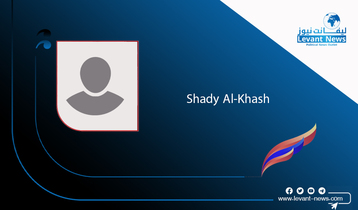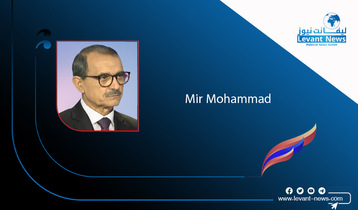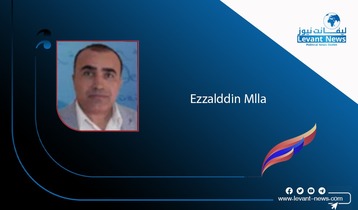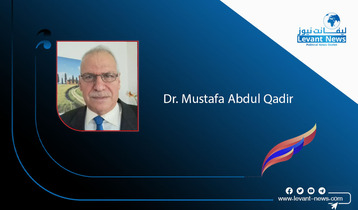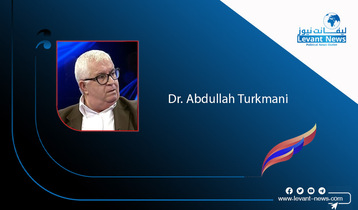-
Why are Assad Regime Officers Pardoned, What is the Intelligence Document
-
What Was the Secret International Decision During the Hama Battle, and What Was Asked of al-Julani in Exchange for the Rule o
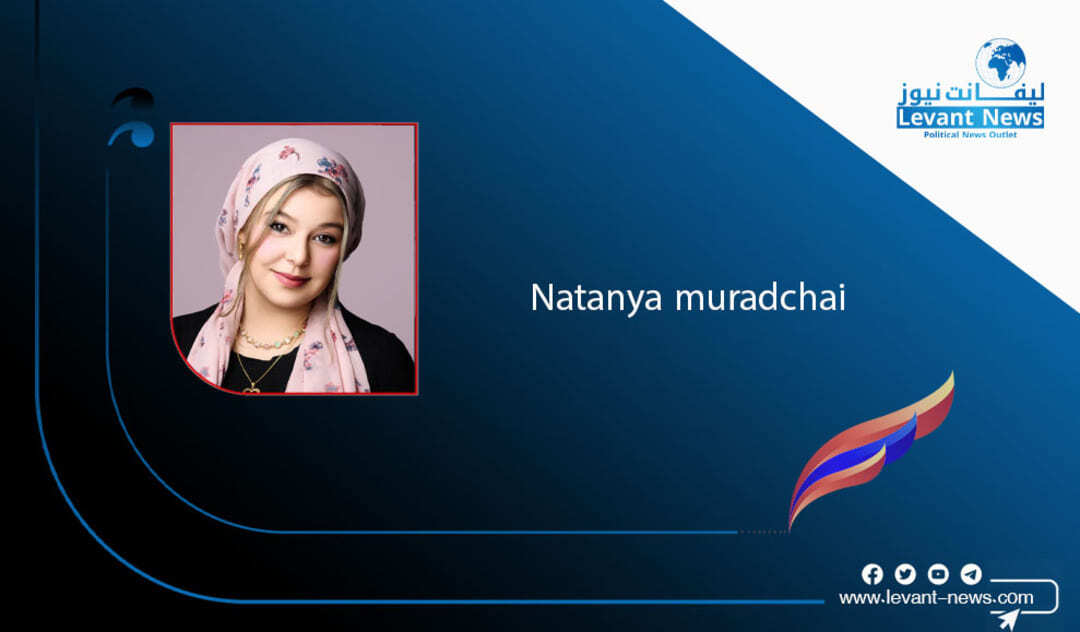
Why are Assad Regime Officers Pardoned, What is the Intelligence Document, What Was the Secret International Decision During the Hama Battle, and What Was Asked of al-Julani in Exchange for the Rule of Damascus?
By Natanya Muradchai
After al-Julani’s entry into Damascus and the Syrian people's joy at what they thought was liberation—a joy that didn’t last—the Syrians were shocked by al-Julani’s statements granting amnesty to criminals, raising the slogan "Go, you are free." Not long after these statements, a group of criminals, followers of the remnants of the regime, who had been documented committing massacres against Syrian civilians, began appearing in the media. One of the most infamous among them was Fadi Saker, involved in the Tadamon massacre, who was pardoned by al-Julani's government and appointed as head of the local reconciliation committee in the coastal region. He also worked to broker deals for hundreds of regime criminals, mediating with Hayat Tahrir al-Sham.
This sparked widespread anger among the Syrian public due to the leniency toward the innocent blood shed by these criminals. Al-Julani and his government did not stop at granting amnesty and making deals with criminals. They also began releasing officers, soldiers, and security agents from Assad’s regime, and spreading them throughout Syrian society.
Why does al-Julani resort to doing this?
To understand this, we must look back in history to gain a better grasp of what’s happening on the Syrian stage today.
In mid-2011, the Assad regime issued a presidential pardon for a large number of Islamist detainees in Sednaya prison, including Zahran Alloush and others who later became leaders of Jaysh al-Islam, Ahrar al-Sham, and Jabhat al-Nusra.
The political aim behind this pardon was clear: to push the revolution toward a jihadi path, turning it into a sectarian conflict to justify its suppression and to force the international community to choose between the regime or "terrorism," thus allowing Assad to regain international legitimacy under the pretext of "fighting extremism."
When Jabhat al-Nusra announced itself in Syria in 2012, claiming responsibility for a terrorist bombing near one of the regime’s security branches, suspicions grew that this operation had been orchestrated by the regime’s intelligence services. These suspicions were reinforced when one of the intelligence documents was published, showing orders to execute the operation after the regime’s fall.
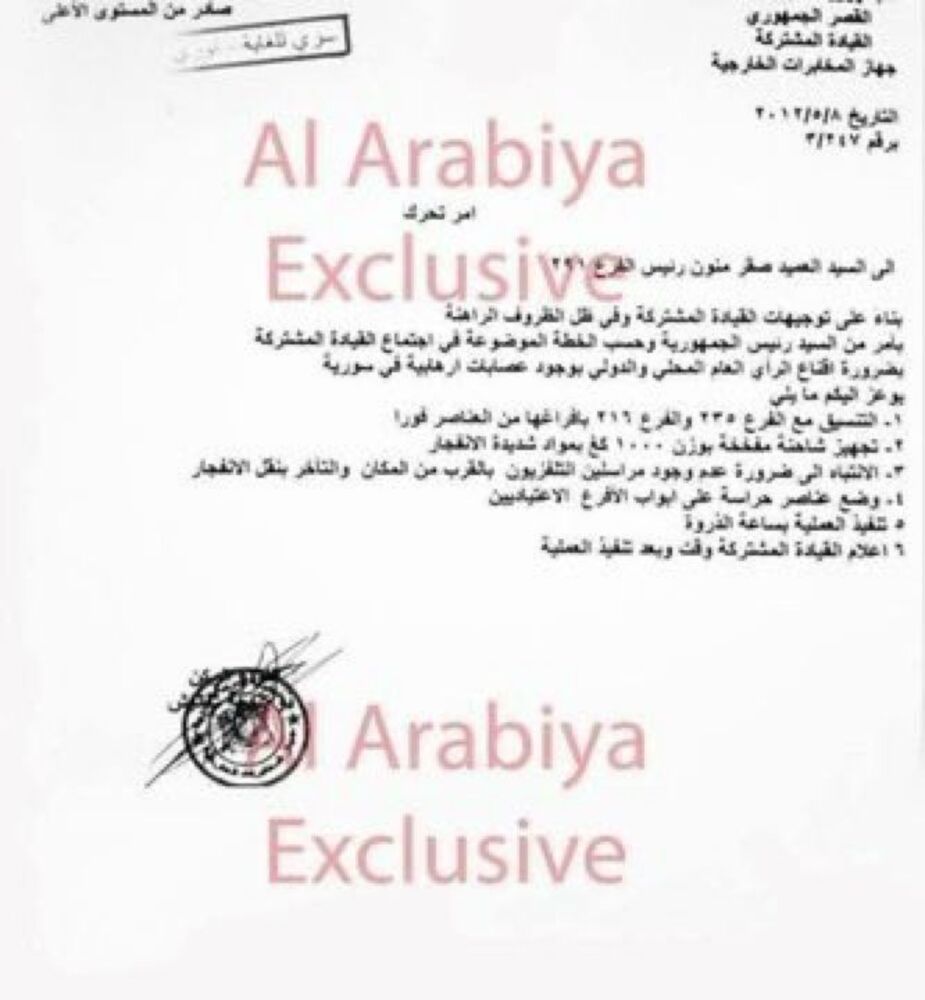
It appears that the group worked in coordination with the regime’s military intelligence, given the regime’s need to link terrorism to the Syrian revolution and cut off Western and Arab support for the Free Syrian Army. These operations gave the new organization popularity, attracting many Islamists and foreign volunteers. After growing in number and activity, it worked both behind the Free Syrian Army and against it. Jabhat al-Nusra liberated only what was already liberated, before splitting from Abu Bakr al-Baghdadi and pledging allegiance to al-Qaeda and Ayman al-Zawahiri.
When the European Union was about to lift its arms embargo on the opposition, Jabhat al-Nusra fought the Free Syrian Army in the south and north, clashed with ISIS in the east, and was defeated there. Its activities intensified in the south until it was forced to retreat to the north, where it had to ally with Ahrar al-Sham under the banner of the Army of Conquest. Once it consolidated its position, it fought the factions in northern Syria and Idlib, killing thousands. It eventually disbanded Ahrar al-Sham, absorbing it and insisting on breaking the siege of Aleppo. This led to Russian bombings and the eventual fall of Aleppo in coordination with the Sochi axis. It also participated in the defense of rural Hama, seized a position in Khan Sheikhoun, and soon after abandoned it, forcing the remaining defenders to retreat due to the threat of encirclement. It also handed over areas east of the railway to the regime and contributed to the surrender of Saraqib and Maaret al-Numan.
It became Hayat Tahrir al-Sham, ruling Idlib emirate, having fought most factions in the south, Damascus, and its countryside. The factions it allied with were soon betrayed and dismantled. It crushed Jabhah Thuwar Syria and its allies in Idlib, and the Hazzm Movement and al-Farouq in Hama and Homs. It also repeatedly fought with Jaysh al-Islam and continued to hunt down rebels, executing thousands—about 20,000 revolutionaries, some of whom disappeared in its prisons.
One of the most significant services the group rendered to the regime was the kidnapping of the nuns from Maaloula, the abduction of Lebanese soldiers, which justified Hezbollah’s intervention, as well as bombings in Beirut’s Bourj al-Barajneh, killing dozens. The fall of Aleppo, Khan Sheikhoun, East of the Railway, Saraqib, and Maaret al-Numan were all linked to it.
As Syria became a major battleground for Iran, which considered Syria as its Iranian province, Bashar al-Assad lost control. Israel became frustrated with him, especially as his policies handed effective decision-making over to Iran. At this point, there was no international agreement on Assad's departure or finding a replacement until the Syrian factions reached Hama, the only city to see several days of clashes. During this battle, there were discussions among decision-making countries about whether to stop Hayat Tahrir al-Sham’s advance or allow it to move toward other provinces, including Damascus.
After intense pressure on Iran regarding its nuclear issue, Iran’s withdrawal from Aleppo, and Russia halting its support for Assad’s weakening regime, Israel’s heavy strikes on Hezbollah in Lebanon and Iranian Revolutionary Guard positions in Syria, Assad's regime collapsed. Homs and Damascus were handed over to Hayat Tahrir al-Sham, which was guaranteed by international powers not to target regime elements. This decision was made during the Hama battle, which explains that al-Julani’s entry into Damascus was part of an international agreement, and his amnesty for regime remnants was not for liberating Damascus from Assad’s regime, but because it was part of the broader deal.
Al-Julani is, therefore, executing a mission assigned to him internationally. His entrance into Damascus was not out of a desire to free it from Assad's regime, but because of a deal to grant amnesty to regime remnants.
Al-Julani’s government is expected to lead a transitional justice phase ensuring accountability for the criminals who committed crimes against the Syrian people. However, what is happening on the ground is a clear betrayal of these principles, reflecting a vengeful approach. The justification provided by his government for releasing regime officers—so as not to provoke human rights organizations or prevent sectarian explosion—does not hold up in the face of the facts. These are not political detainees, but war criminals with documented records of torture and executions in Sednaya prisons, which have become an emblem of Assad’s regime’s brutality.
Can we convince the victims that the release of their torturers is because of human rights organizations? Justice is not achieved by appeasing external forces, but by upholding internal justice. If al-Julani fears human rights reports, he should establish transparent trials, not secretly release criminals back onto the streets.
The Assad Scenario, Repeated by al-Julani
The issue of pardoning and releasing regime criminals, officers, and security personnel is not about human rights or reconciliation in exchange for money—it is far more dangerous. These officers are not just ordinary criminals; they are intelligence officers, battalion commanders, and responsible for death squads during Assad’s rule. They have battlefield experience in forming sleeper cells and planning assassinations.
Al-Julani knows he is politically and publicly isolated, with no external recognition for his government. He is, therefore, seeking tools to undermine any alternative political project that may emerge, either from the opposition or even from within his own ranks. By releasing regime officers, he is re-empowering them, dressing them in new uniforms that allow them to infiltrate the structures of the emerging state and create future breaches that may lead to the collapse of any future authority that does not align with him. Thanks to their security and military expertise, these officers will begin setting up covert networks, particularly in the Alawite-dominated coastal regions, and they will reconnect with dormant elements of the old regime. Since Iran is still seeking new ways to infiltrate any new Syrian government, these officers could become a Trojan horse for Iran's return to Syria.
What is al-Julani’s ultimate goal in all this corruption and security turmoil?
Let us turn to post-Saddam Iraq for clarity. When the Iraqi army was dissolved, many high-ranking officers were not prosecuted but later released. Many of these officers were behind the establishment of ISIS, led by the Ba’athist officer Haji Bakr, who laid the security foundations of ISIS in Mosul. In the case of Libya, many of the current leaders of the militia in Tripoli and Western Libya were former intelligence officers of Gaddafi’s regime, some of whom worked on assassinating revolutionary figures. In Yemen, after Ali Abdullah Saleh’s death, his intelligence officers formed cells that worked with the Houthis to take over Marib and the southern regions, exploiting their knowledge of the Yemeni military structure. Similarly, in Sudan, after the ousting of Omar al-Bashir, officers from his National Intelligence and Security Service formed what became known as the "Kataib al-Zulm," carrying out assassination operations and obstructing any democratic path.
Al-Julani is not building a state; he is planting thorns in the path of any future state. He wants to present himself as the awaited savior in case of popular rejection of his rule by manipulating the Sunni leadership’s role as their only savior from attempts to overthrow him by regime officers or any military opposition, even from his Sunni base. His mentality is rooted in the idea that, if he can’t stay in power, he will plunge the country into chaos and terrorism, much like Bashar al-Assad did when he raised the slogans “Assad or we burn the country."
Just as Assad freed Islamists from Sednaya and created a terrorist monster within the revolution to destroy it from the inside and scare both the domestic and international arenas, today al-Julani is releasing regime officers and thugs with security and military expertise to execute a new chaos plan if his regime is overthrown. As evidenced by the intelligence document revealing secret coordination between Assad’s intelligence and extremist leaders using Islam for personal gain, the reality on the ground today indicates that there was a secret agreement to turn the Syrian revolution into a battleground for terrorism and chaos. This is what Bashar al-Assad warned about in a phone call just before his departure when he said, "They will regret it, the Syrian people."
Here’s a professional translation of the text you provided:
---
Is al-Julani filling the vacuum left by Bashar al-Assad?
And was there really communication between al-Julani and the Syrian regime?
There are well-founded doubts that the regime sent him to Iraq before the U.S. invasion, via sheikhs and mosque imams who were allowed to preach jihad in defense of Iraq. One of the most prominent was Abu al-Qa'qa (Qoul Agassi), and another was a mosque sheikh where al-Julani used to pray at the time. However, the Iraqi regime fell quickly, and they returned. They were then reorganized and sent again as part of a plan to drain the American occupation, so it wouldn’t take the next step towards Damascus.
Most of the bombing operations in Iraq involved cars that were rigged with explosives in Syria and driven by jihadists who entered Iraq with them. This led Nouri al-Maliki to file a complaint with the United Nations Security Council at the time, accusing Syria of destroying Iraq by sending terrorist fighters that they trained and dispatched. Syria was the main gateway for the entry and support of Islamic resistance movements in Iraq, starting with Abu Musab al-Zarqawi and tens of thousands of others from various countries. All of the resistance organizations in Iraq had ties to Syrian intelligence, including al-Nusra and ISIS, and they still do.
When al-Julani returned in 2012, he was embraced by the Military Security Branch, which supported him, continued to provide him with weapons stores, and gave him symbolic victories. The regime never targeted him, even though it carried out brutal bombings of everything else. The Syrian regime never fought al-Nusra, ISIS, or Hay'at Tahrir al-Sham, nor did it target al-Julani and his comrades at any point during the 13 years of the so-called war between them.
It was only when Bashar al-Assad's regime handed over power to them, in a planned counteroffensive that was coordinated and agreed upon, ensuring the safe exit of regime figures and securing the safety of Assad's close allies, as we see today. The financial network once used by the regime is the same network that funds Hay'at Tahrir al-Sham. It now operates as it did, with its figures and institutions.
According to Khaled al-Ahmad, Bashar al-Assad’s advisor, who acknowledged in an interview with a foreign newspaper that he visited al-Julani several times in Idlib, he was warmly received there. Today, he is a sponsor of reconciliations and is close to al-Julani, along with the criminal Fadi Saqr. Moreover, Samer Foz and Mohammad Hamsho remain at the helm of their businesses, under the protection of al-Julani’s security, who has become their new partner and operator, along with his four brothers, close relatives, and their families. The current appearance of power shows that the regime has remained the same, with only the president's position changing.
Natanya Muradchai
You May Also Like
Popular Posts
Caricature
BENEFIT Sponsors BuildHer...
- April 23, 2025
BENEFIT, the Kingdom’s innovator and leading company in Fintech and electronic financial transactions service, has sponsored the BuildHer CityHack 2025 Hackathon, a two-day event spearheaded by the College of Engineering and Technology at the Royal University for Women (RUW).
Aimed at secondary school students, the event brought together a distinguished group of academic professionals and technology experts to mentor and inspire young participants.
More than 100 high school students from across the Kingdom of Bahrain took part in the hackathon, which featured an intensive programme of training workshops and hands-on sessions. These activities were tailored to enhance participants’ critical thinking, collaborative problem-solving, and team-building capabilities, while also encouraging the development of practical and sustainable solutions to contemporary challenges using modern technological tools.
BENEFIT’s Chief Executive Mr. Abdulwahed AlJanahi, commented: “Our support for this educational hackathon reflects our long-term strategic vision to nurture the talents of emerging national youth and empower the next generation of accomplished female leaders in technology. By fostering creativity and innovation, we aim to contribute meaningfully to Bahrain’s comprehensive development goals and align with the aspirations outlined in the Kingdom’s Vision 2030—an ambition in which BENEFIT plays a central role.”
Professor Riyadh Yousif Hamzah, President of the Royal University for Women, commented: “This initiative reflects our commitment to advancing women in STEM fields. We're cultivating a generation of creative, solution-driven female leaders who will drive national development. Our partnership with BENEFIT exemplifies the powerful synergy between academia and private sector in supporting educational innovation.”
Hanan Abdulla Hasan, Senior Manager, PR & Communication at BENEFIT, said: “We are honoured to collaborate with RUW in supporting this remarkable technology-focused event. It highlights our commitment to social responsibility, and our ongoing efforts to enhance the digital and innovation capabilities of young Bahraini women and foster their ability to harness technological tools in the service of a smarter, more sustainable future.”
For his part, Dr. Humam ElAgha, Acting Dean of the College of Engineering and Technology at the University, said: “BuildHer CityHack 2025 embodies our hands-on approach to education. By tackling real-world problems through creative thinking and sustainable solutions, we're preparing women to thrive in the knowledge economy – a cornerstone of the University's vision.”
opinion
Report
ads
Newsletter
Subscribe to our mailing list to get the new updates!

